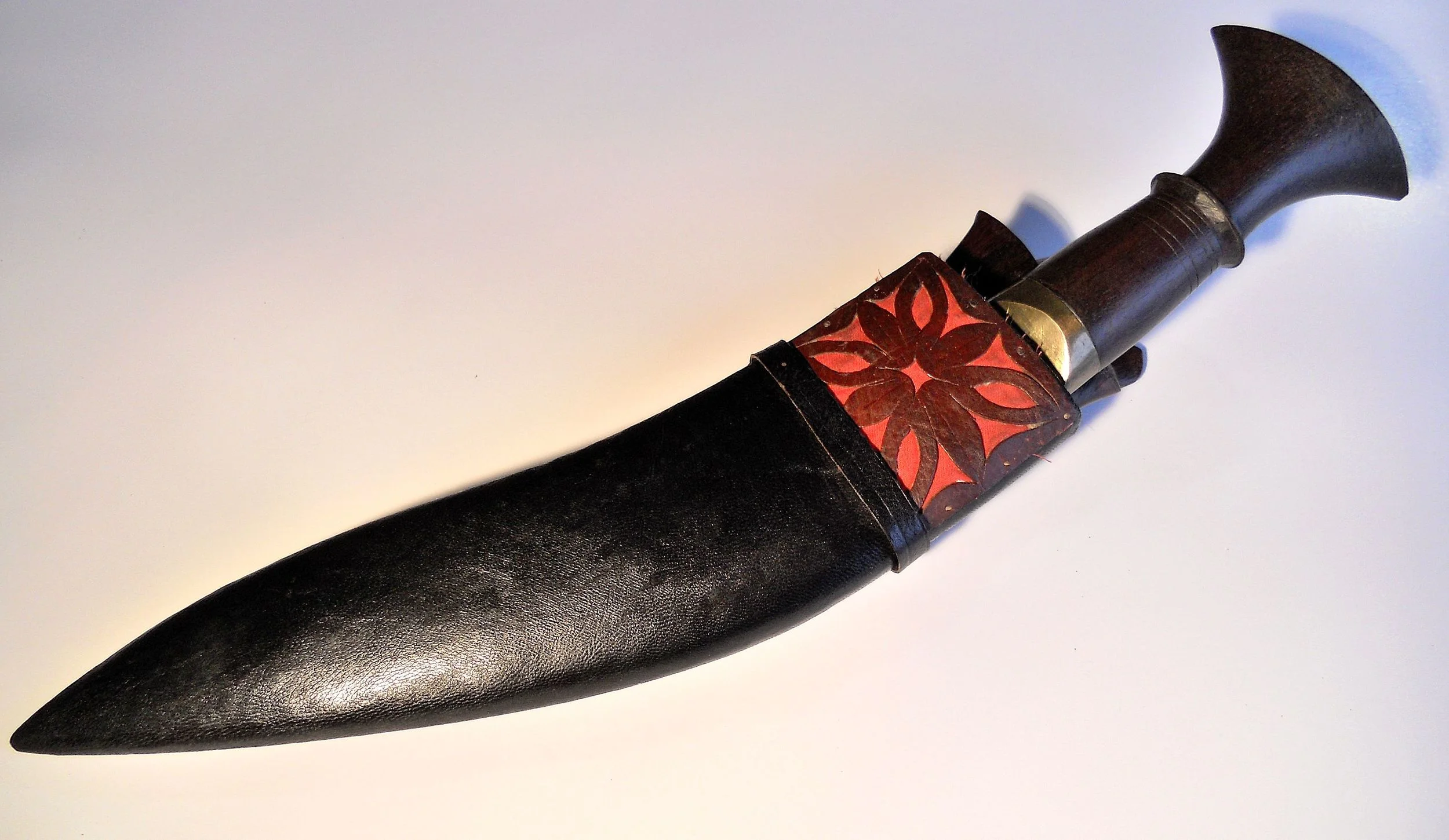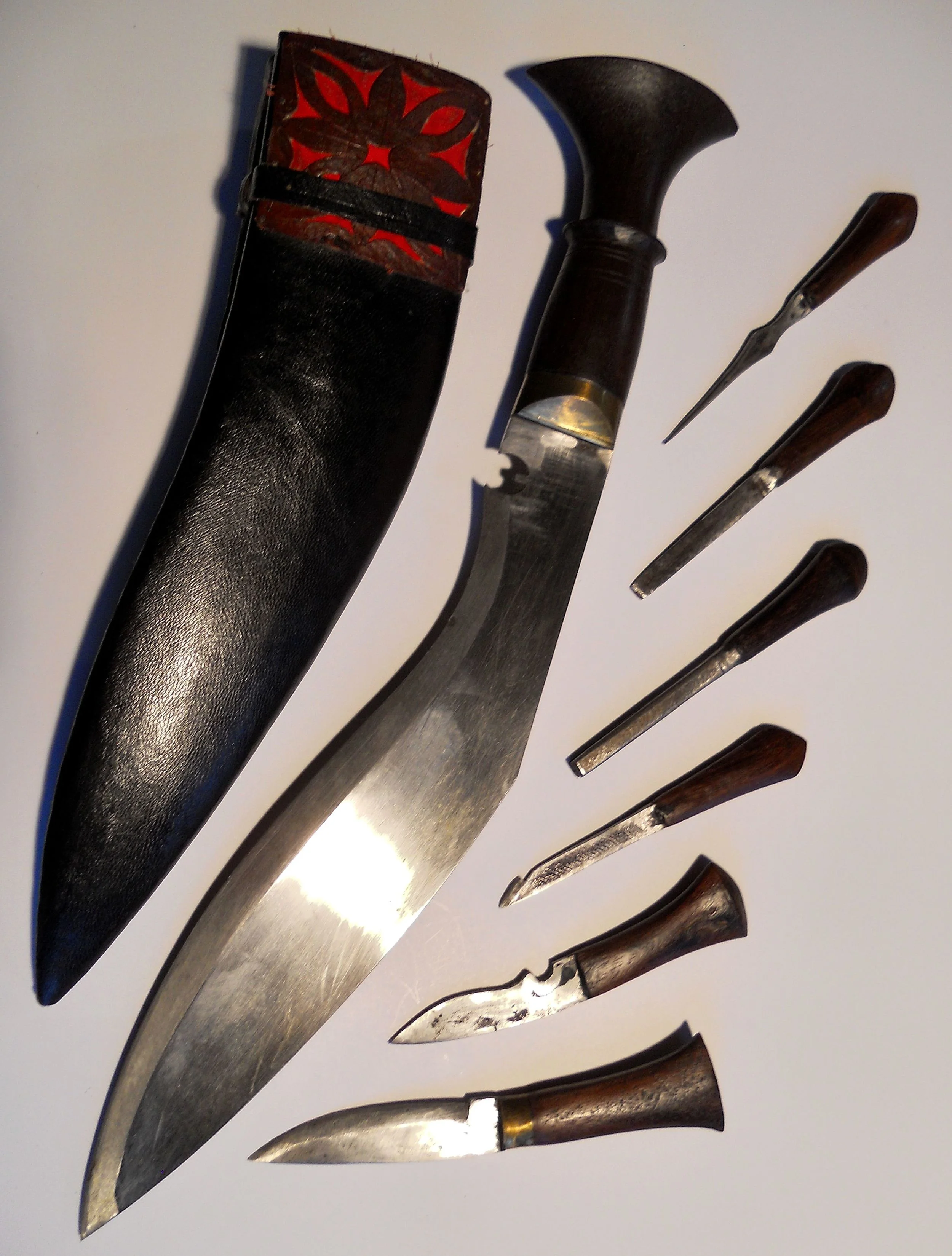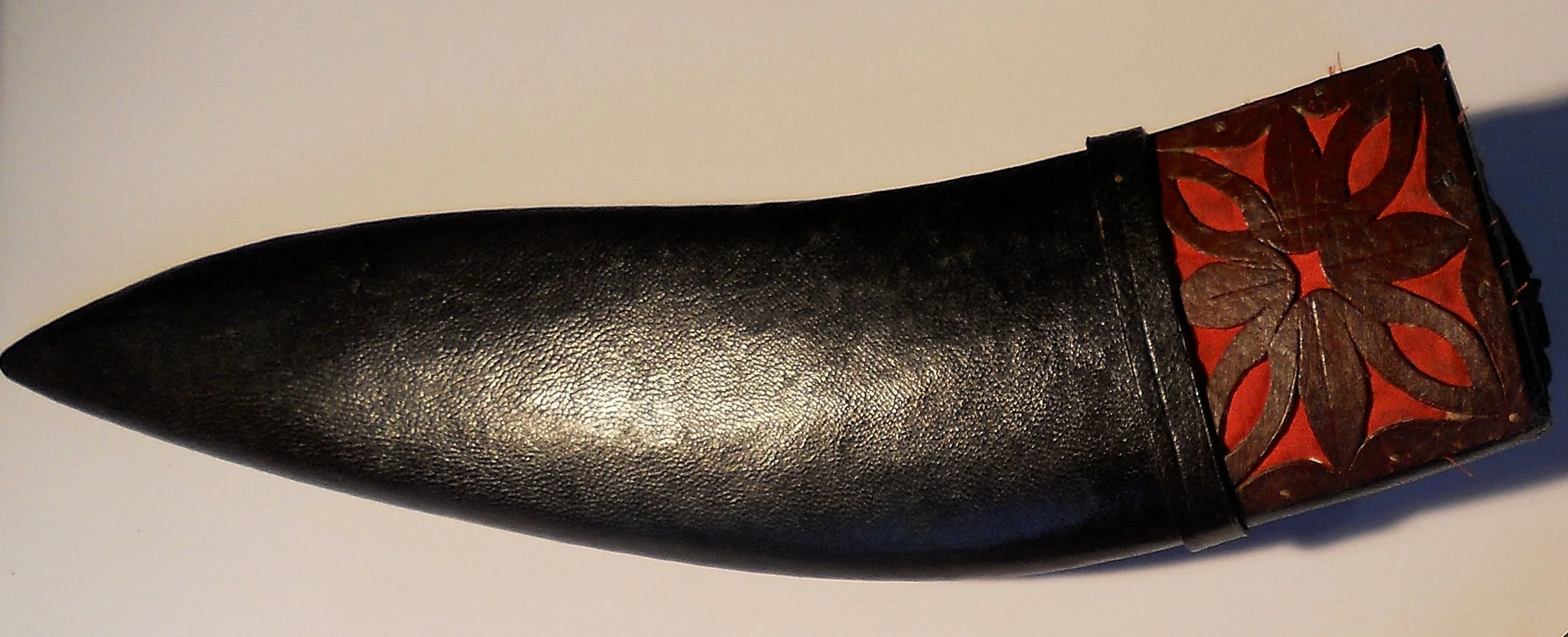Khukuri knife restored with natural furniture polish
Welcome to the new Cambridge Traditional Products blog. I thought I'd start with a piece about this knife and how I used our furniture polish to rescue it from a state of neglect. Regretfully, I did not think to photograph it before I started, so no "before and after" pics, unfortunately!
The Nepalese Khukuri is the official weapon of the Nepalese Army and Ghurka Regiments. Besides having a fearsome reputation as a weapon, it is also a commonly used utility knife, used in agriculture and the home. This type, known as the "Ganjawala Khukuri" is one of the oldest styles and is most popular with farmers and villagers in the remote regions of rural Nepal. With its wonderful selection of extra tools, it brings to mind the Swiss army knifes we are all so familiar with these days.
This one was brought back by my brother about thirty years ago, and I'm ashamed to say, was somewhat neglected. It ended up stored in a box in a barn. When I rediscovered it a couple of years ago it was in a sorry state.
Initially I thought of using our furniture polish on the handle (obviously, it being made of wood) and the sheath. The goatskin leather sheath was in a dreadful state, it had become so dry, that I thought it might crack or split and the black had faded to a dull grey.
We know that our furniture polish is very good as a leather polish or restorer. We have customers who tell us they use it on boots, saddles, sofas and in restoration of old briefcases, among other things. We do not advertise it specifically as leather polish, as there are potential issues like the Turpentine effecting dyes, but as long as people are aware of these things, it is very effective. I do intend to formulate an alternative version, using a slightly different recipe, as a specialist leather balm, hopefully to be added as a new product in our range in 2014.
The effect the polish had on the sheath was remarkable. It totally transformed it from being dried, worn-out and dangerously brittle, to something that looks like new and is once again supple and flexible.
The handle, whilst probably Rosewood, is actually quite a plain piece without any significant grain or colouration, so there was a limit to what the polish could achieve here in terms of enhancement.
While polishing the handle, however, it occurred to me that I might as well continue to apply it to the brass and steel as well. Turpentine is a natural solvent and as such does a fine job of removing corrosion from metal.
So, in the end I applied our furniture polish to every part of the knife and sheath. As well as cleaning the blade, I believe the polish has left a thin but significant layer of beeswax over the metal which should serve to protect it from moisture in the future. It occurs to me that our polish is an ideal treatment for all parts of an ornamental knife or sword. I would be very interested to hear from any sword collectors or specialists who may have an opinion on this.


